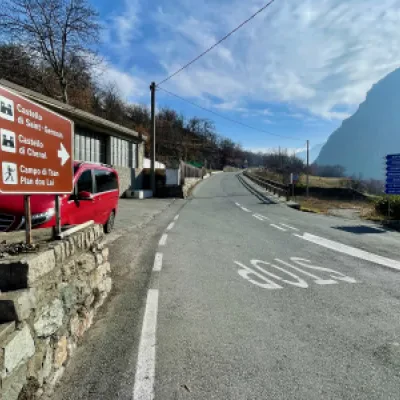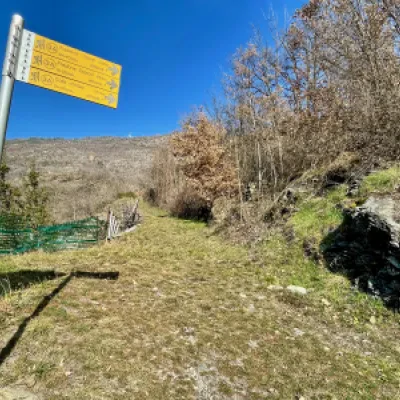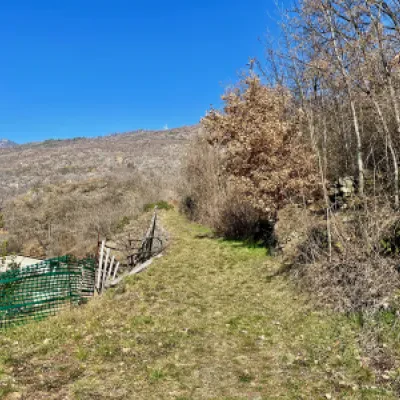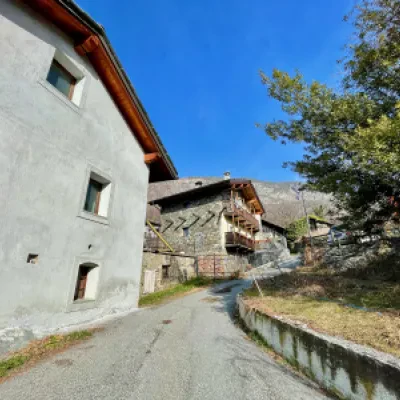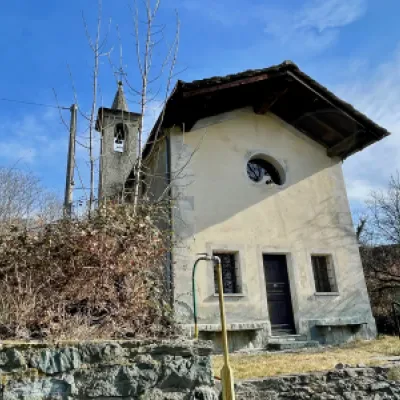Chenal Castle, from Champerioux
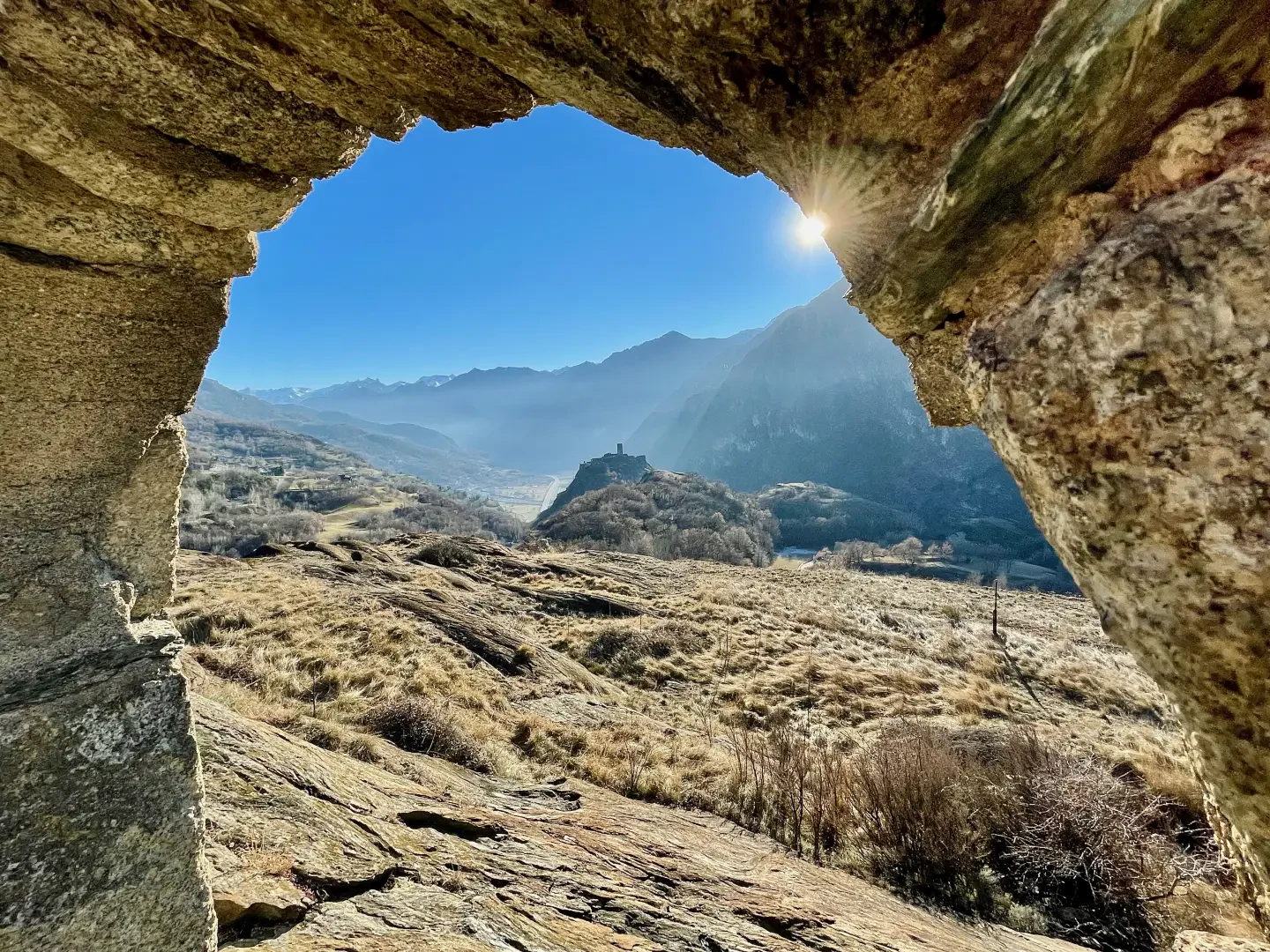
Access
Leave the motorway at the Verrès exit, enter the roundabout and take the third exit, joining the Strada Statale in the direction of Aosta. After about 450 metres, at the next roundabout, take the first exit and continue along the state road for 3.9 km until you reach another roundabout, near the locality of Berriaz. Take the second exit and continue on the state road, pass through the village of Montjovet and start climbing up the "Mongiovetta", the old road that climbs with some hairpin bends. After about 3.7 km, you will find on the left a large free car park 🅿️ near the Hotel Castello, where you can leave your car.
Distance and travelling time
🕒 Travelling time: 10 minutes
📏 Distance: 8.1 kilometres
GPS navigation
📍 How to get there with Google Maps
📍 How to get there with Apple Maps
Important note
The directions given were verified on the date of the route survey. Before departure, it is advisable to check for any changes to the route. For up-to-date and detailed directions, we recommend the use of Google Maps or Apple Maps.
.Introduction
Between pastures, history and views of the lower Aosta Valley
Just above Champerioux, a tiny hamlet of the municipality of Montjovet, a quiet and little-trodden path leads to the ruins of Chenal Castle, suspended on a rocky promontory dominating the plain below. The itinerary, short but full of suggestions, unfolds between patches of oak woodland, ancient pastures and tiny rural nuclei, until it reaches the point where, even today, one can still perceive the sense of the strategic position chosen for the construction of the castle.
The ascent is gentle, suitable for those who want an immersive walk rather than a demanding hike. The environment is typical of the lower central valley: arid slopes, thermophilic vegetation, landscapes sculpted by human presence and dotted with historical evidence. When you reach the foot of the fortress, your gaze opens out onto a wide panorama that sweeps from the Montjovet plain to the slopes of Mont Lyan, restoring for a moment the perspective of the fortress's former inhabitants.
The site is not accessible inside due to the risk of collapse, but the short diversions is worth it for the atmosphere that surrounds it: a silence full of memory, broken only by the rustle of the wind through the grass and the calls of the birds flying over the valley.
Description
0h00' 0,00km From the car park, walk up the road briefly to the hotel, cross the main road at the zebra crossing and take the road to Estaod. After a few metres, you will come to a signpost on the left.
0h03' 0.0km Take the path that leads slightly uphill through an oak wood (Quercus pubescens), veering slightly to the right before entering the scattered pastures that lie on the slope below the village of Chenal. The path becomes an agricultural track and, after a turn to the right, joins a small farm road. Turn left and climb up the little road until reaching the village of Chenal near the pretty chapel dedicated to Our Lady of Mount Carmel.
0h00' 0.00km (From the car park, proceed towards the entrance of the little path that immediately enters the wooded scrub. Turning right, you come to a small plateau and catch a glimpse of the castle at the foot of Mont Lyan. We descend again briefly to reach a col with an excellent view of the Montjovet plain, and then climb a few steps to the foot of the fortress on which the ruins lie. We descend again, a short distance, and then climb up the little path to Chenal Castle (646m, 0h10').
The environment around the castle is decidedly evocative: splendid panoramic views over the lower and middle valleys give an idea of the strategic nature of the choice of sites on which to build castles.
Please note that it is not possible to visit the inside of the ruins due to the danger of collapse: a gate placed at the entrance to the only access door prevents access to the inside area.


